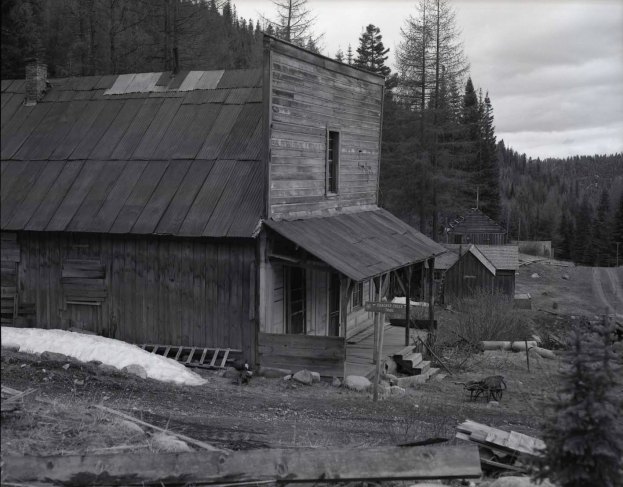
“There’s no ghost town here. The internet lied to you.”
That was the most memorable line—delivered by a wary local —of an epic road trip two summers ago. Some pals and I rented an RV and drove it across Eastern Oregon in search of ghost towns. Despite the ominous conversation and the rotten wood and rubble we could only find at the dusty spot (the dude was right, at least) we did end up finding ghost towns, or at least what remained of them on the rest of the journey. Fueled by beer, road food, lack of sleep and long stretches of driving on lonely roads, the trip was a success and it only solidified by own obsession with ghost towns. I’m not alone.
“Ghost towns hold our fascination for a variety of reasons,” says Theresa E. Rea, MLIS, CA and archivist at Oregon State Archives. “There’s something simultaneously macabre and romantic about them that draws curiosity and intrigue. I can’t speak for others, but I think of ghost towns as unique time capsules. Many nameless souls at one time made their lives in these towns. The remnants allows us a small peek into the past and contemplate what secrets they hold.”

And, to celebrate these long lost towns, the Oregon State Archives are debuting a new exhibit: “Rust, Rot, & Ruin: Stories of Oregon Ghost Towns.”
Rea graciously offered to answer some of my questions about the exhibit as well as go a little deeper on what makes ghost towns so alluring.
What’s the inspiration behind the exhibit?
Oregon has hundreds of abandoned settlements, mining camps, and company towns across the state, and the Archives want to exhibit the rich history of a choice few of these decrepit places. Each town is a unique story of dashed hopes and sundered dreams – each is a tombstone where a frontier community failed. These towns and the forces which slew them were tied to advances in science, industry, and transportation that changed the face of Oregon. In eulogizing these lost places, we will examine the historic factors which contributed to their rise and fall, the people who called them home, and what of their remains lie scattered across the state.

What should visitors expect?
Visitors will encounter stories of selected ghost towns sudden burgeon and demise. Portions use imagery to depict the “then” and “now” of some towns while other segments resurrect towns that have disappeared. Guests can learn about Oregon’s mining, lumber, transportation, federal projects, and tourism industries that informed a ghost town’s fate. Attendees can read about a remarkable 9 year old newspaper editor of a company town or how much a lumberjack ate to sustain their daily work. We are also displaying related artifacts, all on loan from the Oregon Historical Society and the Forest History Center.
What makes Oregon’s ghost towns unique?
I have read claims that Oregon has the most ghost towns in the whole county. Whether that is the case or not, I don’t dare to speculate, but ghost towns are woven into the fabric of Oregon’s robust history of industry, transportation, and tourism. Remember during much of this time period, Oregon was far from settled by Americans and other pioneers. Many of these towns drew individuals and families from all over the world, seeking their fortune. Those who remained helped populate the state and became an integral piece of Oregon’s history.

Why did some towns fail while others thrive?
Research reveals that many of these towns died as quickly as they sprung into existence. This can be due to many reasons. One primary reason which we encounter time and time again is resource exhaustion. Gold mining towns in particular are a great example of this. Many of these places were typically dependent on a single activity or resource, such as mines, mills, or resorts. Crossroads towns are also fascinating because their economic importance was reliant solely upon the railroad. Revitalization or preservation of a ghost town can be seen through the efforts of a citizens invested in keeping history alive.
Oregon State Archives Annual Open House and the debut of Rust, Rot, & Ruin: Stories of Oregon Ghost Towns will be on Saturday October 26; 10:00 a.m.-3:00 p.m. The exhibit runs from Fall 2019-Spring 2020.


[…] Rust, Rot, & Ruin: Stories of Oregon Ghost Towns […]
[…] More information… […]